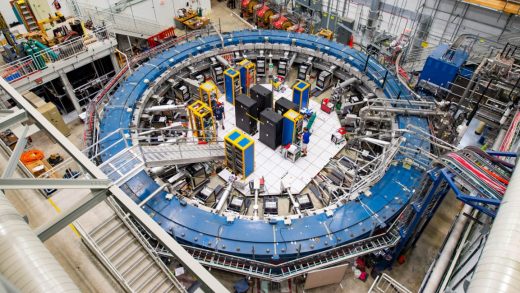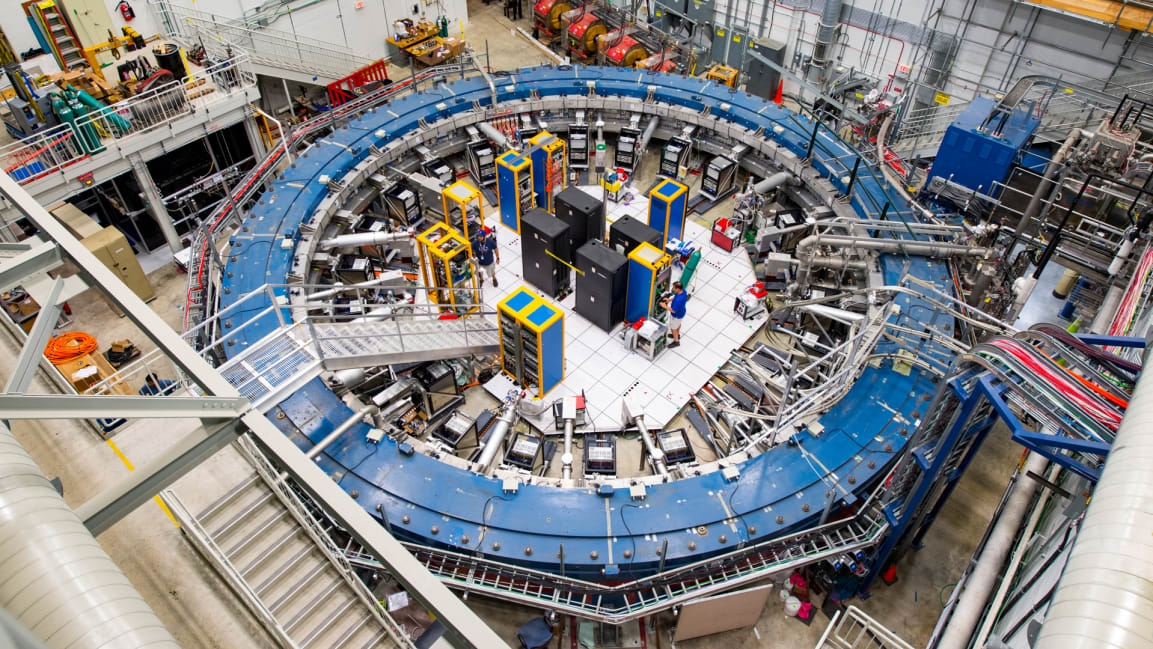What is a muon? Meet the subatomic particle that might be breaking the rules of physics
On Wednesday, a group of scientists revealed a finding that has the potential to unravel our understanding of the universe. A tiny, subatomic particle called the muon appears to be breaking the laws of physics as we know them. The question is: How? And why?
Muons, described as more massive, less stable cousins of the electron—”fat electrons,” if you will—were thought unlikely to upend the principles of modern physics until 2001, when researchers at Brookhaven National Laboratory in New York observed the particles behaving strangely. Roughly 200-fold heavier and far more radioactive than electrons, muons defied theoretical predictions when immersed in a magnetic field, appearing to be pushed and pulled in magnetic moments that could not be accounted for. While inconclusive at the time, the experiment and its results have tantalized physicists ever since.

Earlier this year, a different set of researchers at Fermi National Accelerator Laboratory in Illinois finally calculated the results of a long-running experiment to measure the muon’s magnetism more precisely. Called Muon g-2, the project tapped more than 200 scientists from 35 institutions in seven countries, who analyzed the motion of more than 8 billion muons. Muons in a magnetic field, they found, again wobbled in a way that was inconsistent with theoretical predictions, this time by a margin with a statistical significance of 4.2 sigma. Two decades ago, Brookhaven scientists had reached a statistical significance of 3.3 sigma, meaning there was a 1 in 1,000 chance the results were a fluke; at 4.2 sigma, that chance becomes 1 in 40,000. At 5 sigma, which is the threshold for officially recognized discoveries, it stands at 1 in 3.5 million.
Need some quick facts about the muon? This poster is for you! #gminus2https://t.co/JTRNv9e005 pic.twitter.com/7lNtk0V5hf
— Fermilab (@Fermilab) April 6, 2021
With this most recent finding, scientists are growing increasingly confident that the blanket Standard Model—which is the prevailing theory for the architecture of the universe—is missing something: a layer that would explain the muon’s irregularities. By probing this hole in the fabric, they hope to shed light on a number of unexplained phenomena that fall outside the Standard Model, including such mysteries as the existence of dark matter and dark energy. As physicists currently understand it, any particle shooting through space, such as a muon, is being acted upon by an infinite number of “virtual” particles present within the quantum realm, creating a magnetic tickle of sorts—but the deviations recorded at Fermi and Brookhaven suggest there may be yet another invisible force of nature, waiting to be discovered.
Before all that, experimental results will have to be brought to the 5-sigma threshold with further testing. But some scientists already have eyes on the future.
“I’m very excited,” Fabiola Gianotti, the director-general of CERN (European Council for Nuclear Research), told The New York Times of the recent finding. “I feel like this tiny wobble may shake the foundations of what we thought we knew.”
(24)



